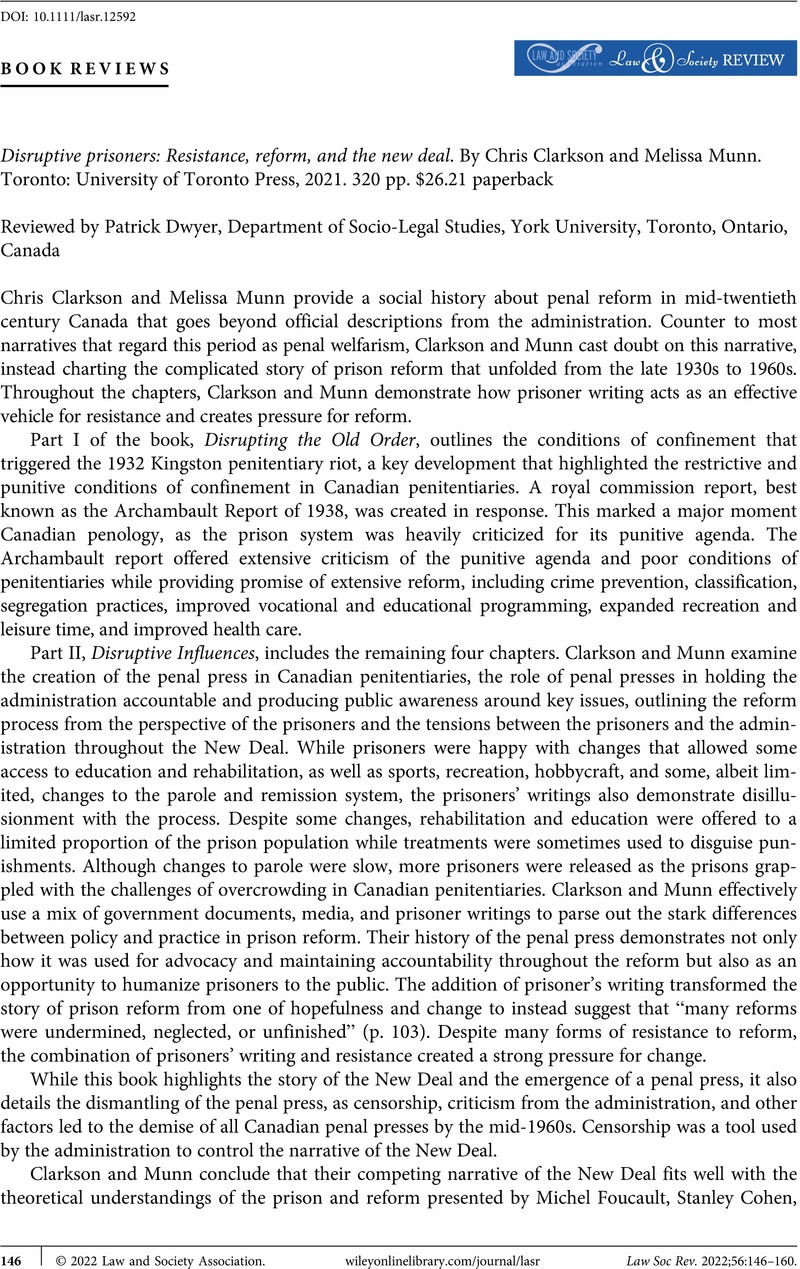No CrossRef data available.
Article contents
Disruptive prisoners: Resistance, reform, and the new deal. By Chris Clarkson and Melissa Munn. Toronto: University of Toronto Press, 2021. 320 pp. $26.21 paperback
Review products
Disruptive prisoners: Resistance, reform, and the new deal. By Chris Clarkson and Melissa Munn. Toronto: University of Toronto Press, 2021. 320 pp. $26.21 paperback
Published online by Cambridge University Press: 01 January 2024
Abstract
An abstract is not available for this content so a preview has been provided. Please use the Get access link above for information on how to access this content.

- Type
- BOOK REVIEWS
- Information
- Copyright
- © 2022 Law and Society Association.


